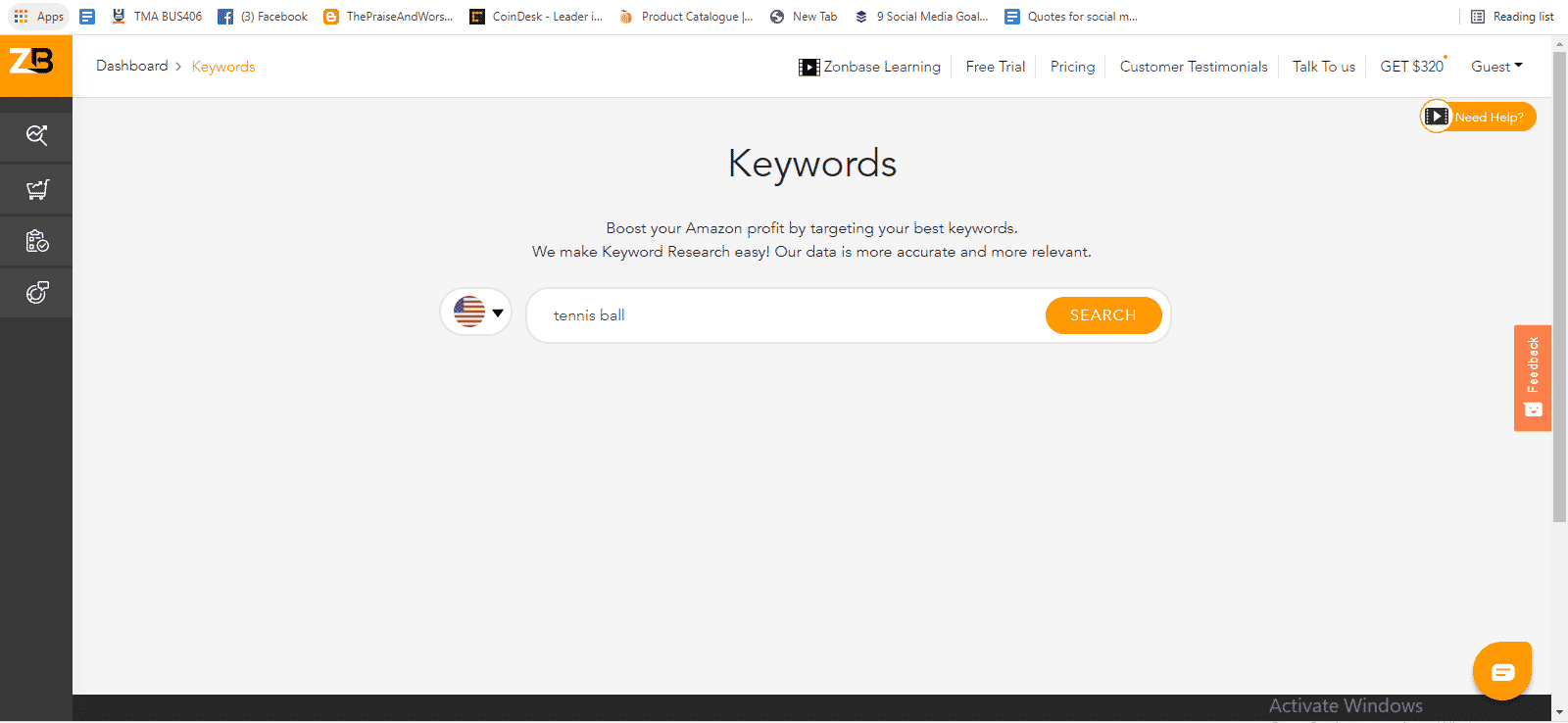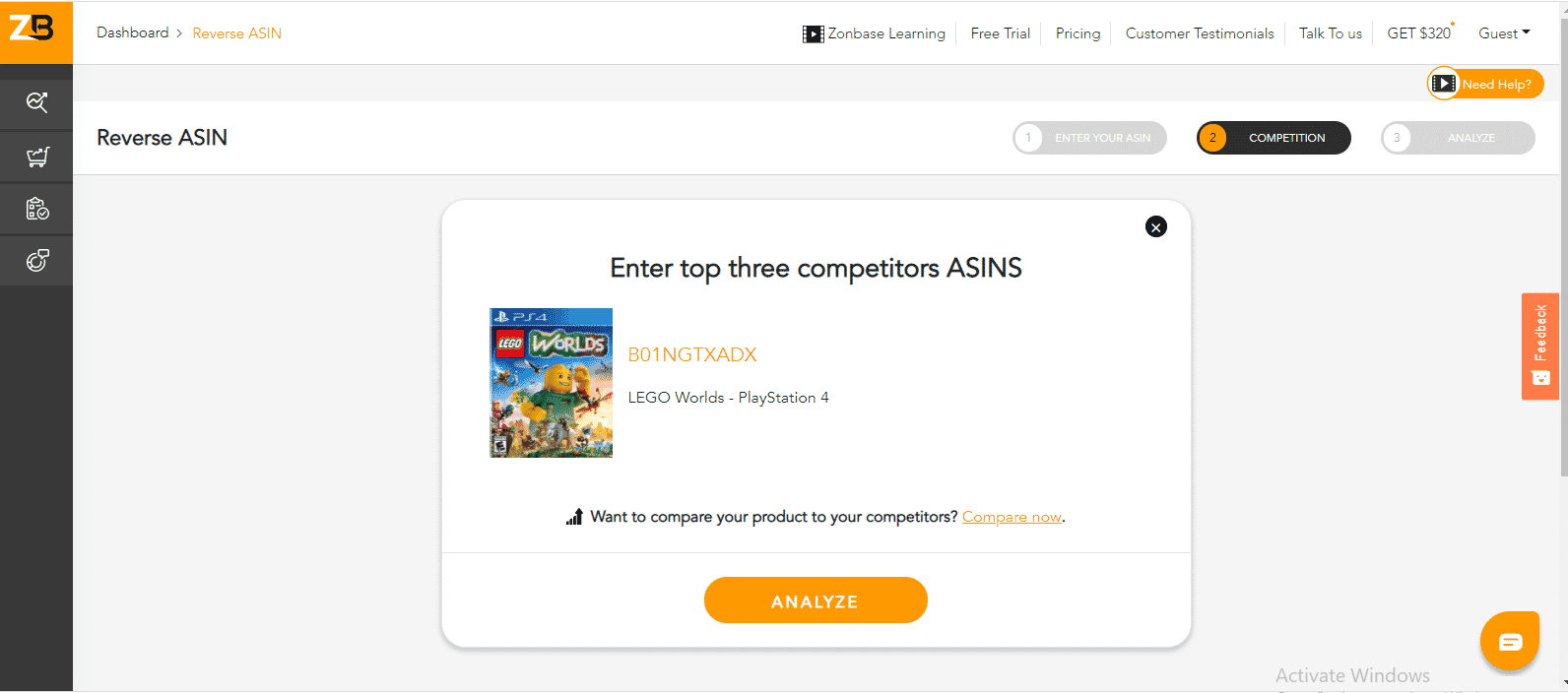You will need to perform Amazon keyword research if you wish to succeed on Amazon FBA. Although performing Amazon keyword research can seem daunting at first, it becomes easier as time passes.
If you’re a beginner learning how to sell on Amazon FBA, you have to start with finding the most profitable product categories. Once this is done, keyword research is the next hurdle you will have to scale. But, how do find the best keywords for your Amazon store?
Here is a complete guide to Amazon keyword research to help you succeed in 2022 and beyond. In this post, you will also learn about the most effective Amazon keyword research tool for Amazon sellers. But, first, let’s see how the Amazon Algorithm works.
Amazon’s Search Algorithm
Amazon is primarily a search engine. But this search engine serves a different purpose from other search engines that you are conversant with. Google and other search engines are designed to make information accessible, while Amazon is adapted to sell products.
Amazon’s search engine – A9, uses many factors to determine what products pop up in Amazon search results. This way, it can bring up the exact products that customers are searching for.
A9 shortens the customer’s journey by carefully filtering products to match the customer’s search terms so that the product they’re looking for shows up in the first few search results.
How does Amazon’s search engine rank products? The answer is simple. A9 simply ranks products on Amazon search results by relevance. How then does the algorithm determine how relevant a product is?
Amazon Product Ranking and Keyword Research
A9 compiles search results based on product relevance. However, no one knows what factors come into play before the algorithm makes its choice. If everyone knew A9’s secret, then every Amazon seller would hack the algorithm.
So, while it is impossible to state precisely what determines a product’s relevance, here are two things that A9 most likely considers.
Sales Volume and Conversion rate
If you wanted to place an order would you rather purchase a product no one has ever bought or one that has many reviews and visible purchases? If you chose the latter, then Amazon’s search algorithm works just like you.
A9 (Amazon’s search algorithm) perceives a product to be relevant based on the number of sales and page views.
What is Sales Volume?
However, sales velocity tends to be more difficult to measure.
As a general rule, it is calculated by multiplying the number of chances (in this case, page impressions) by the average sale, multiplied by the conversion rate, and then dividing it by the length of the sales cycle.
In other words, Page impressions x Average sale x conversion rate divided by the length of the sales cycle = sales volume.
But it still doesn’t end there, remember conversion rate plays a major role as well.
What is Amazon’s conversion rate?
Amazon’s conversion rate is pegged at a whopping 13%. The conversion rate is simply a measure of the likelihood of a product being purchased.
To arrive at this conversion rate, divide the total number of page views by the number of sales a particular product makes.
Other factors that Amazon’s algorithm is likely to consider include:
Product Title
Amazon’s algorithm also takes note of your product title, so if you’re just starting and have not made any sales yet, optimizing your product title might be an easy way for you to rank on Amazon.
On Amazon, each product has a title. The title serves more than just to inform your customers what you’re selling, the A9 search engine on Amazon is also made aware of your product.
Amazon allows its sellers to use a title of up to 200 characters.
Optimizing your product titles with the right keywords and product details helps the search algorithm to rank your products better so you can gain more visibility.
Using bullet points in your product listings also makes it easier to incorporate other relevant keywords. A single product can have multiple keywords, it is impossible to use all the keywords in your titles.
You can also use bullet points to explain your product better to your customer. This space should be used to explain the features and benefits of your product shortly and succinctly. Be sure not to fill your bullet points with unnecessary content or keywords.
Here’s what your product titles and bullet points should look like:

Product Description
Your Product descriptions may not necessarily help Amazon rank your products better but there’s only one way to help buyers understand your products better and make the final decision to purchase them.
No one wants to purchase a product that they know next to nothing about, so your description is a good place to sell your products better. You can insert any leftover keywords but don’t overdo it.
Reviews and Images
Having a ton of good reviews certainly helps boost ranking on Amazon. Optimized, high-quality product images will also make your listings more noticeable and attractive.
Related: How to get reviews on Amazon in 2021: 7 trusted tips
Amazon Keyword Research Tips
The above tips will help you get the algorithm on your side and rank better on Amazon, but here are a few tips to help you select better keywords and hack Amazon keyword research quickly.
Use long-tail and short-tail keywords
“Long-tail” and “Short-tail” are terms used by Amazon experts to distinguish between keyword phrases. As you already guessed, keyword phrases are not usually the same.
Long-tail keywords use a longer combination of words, usually about four, five words, or more. Short-tail keywords, on the other hand, are the direct opposite and use only a combination of two or three words.
Short-tail keywords are often more competitive and more generalized than long-tail keywords, and as a result, have higher search volumes. The cost of short-tail keywords is also relatively higher.
Long-tail keywords have lesser search, volume, are less competitive, have higher chances of conversion, and incur lower costs.
Short-tail keywords use niche-generalized terms like clothes, shoes, gadgets, and the likes. If you use more of these keywords in your listings, you’re likely to run at a loss because if your product isn’t what buyers are looking for, your conversion rate will be unbearably low, causing you to spend more on advertising without making any revenue back.
Run PPC Campaigns
Amazon Pay-Per-Click campaigns are a great way to access relevant keywords for your product listings.
You can either run manual campaigns or automatic campaigns. With manual campaigns, you have to choose the keywords you want to rank for, for automatic campaigns, Amazon will try out several keywords for your products and work with the best of them.
Running automatic Amazon PPC campaigns is the best option especially if you have little to no knowledge about Amazon keyword research. Letting Amazon pick the best keywords for you is a low-risk approach to carrying out effective keyword research for your listings.
Use Amazon FBA software
Amazon FBA software is software designed to help Amazon sellers carry out major Amazon business processes like product research, keyword research, and listing optimization. ZonBase is the best all-inclusive Amazon FBA software, it contains an effective combination of Amazon keyword research tools.
ZonBase Amazon Keyword research tools will help you research relevant keywords for your niche and help you narrow down these options to the best.
ZonBase Amazon Keyword research tools include:
- Keywords
- ZonTracker
- Reverse ASIN
Keywords
The visibility of your products on Amazon will determine how well they sell. To make more sales, it is imperative to rank on the first page of search results.
A good product research strategy and sponsored ads are not the only ways to rank on Amazon and make sales. The importance of Amazon keyword research cannot be overstated.
Amazon keyword research can be completed manually or using other Amazon seller tools; however, the ZonBase keyword tool has many features that are designed to assist you in automating the process.

In addition to the Keyword tool in ZonBase, you can also use the other tools embedded in ZonBase Amazon software to validate these keywords.
Zon Tracker
Do you know how your keywords have performed so far? Wouldn’t it be great if you could check your ranking within seconds?
Researching keywords alone isn’t enough. Zon Tracker allows you to pick any keyword on Amazon FBA and get all the details of that keyword within seconds. It tracks your keywords and keeps you updated when they change. Furthermore, the system displays a list of different variations of your competitors’ keywords.
Reverse ASIN
Finding the right keywords and preferably the ones that your competitors use is the key to creating the perfect product listings. Based on our several years of scaling and growing Amazon businesses, we know this.

The ZonBase Reverse ASIN tool gives you an idea as to what keywords your competitors are using and ranking for so that you can use this data to outrank your competitors.
Sponsored ads can also help increase product visibility, but if you don’t use the right keywords you will not be able to get the best results. You will not only learn what your competitors are doing, but you will also be able to increase the amount of money you make from sponsored ads if you include keywords from this tool in your ads.
Conclusion
Amazon keyword research is usually the elephant in the room for most Amazon sellers. A daunting task no one wants to talk about, because of the technicalities involved and the essentiality of this task. However, with the tips we have provided, Amazon keyword research should no longer be something to worry about.
Go ahead and get those keywords!

0 Comments